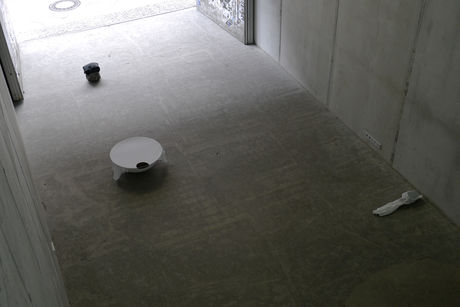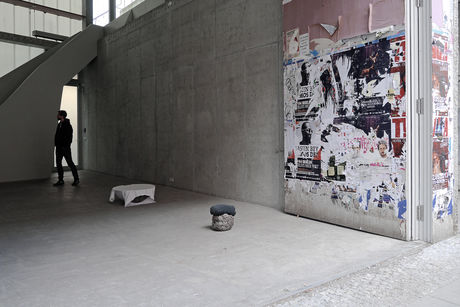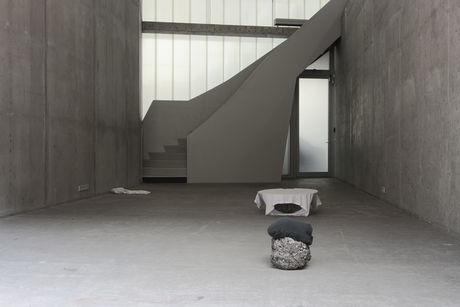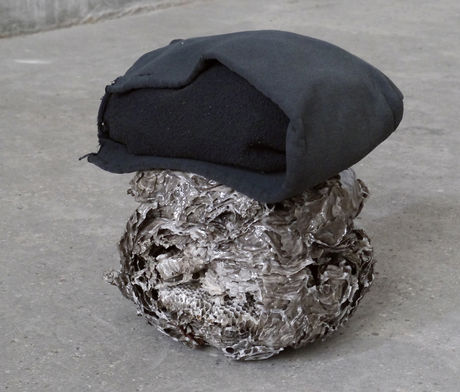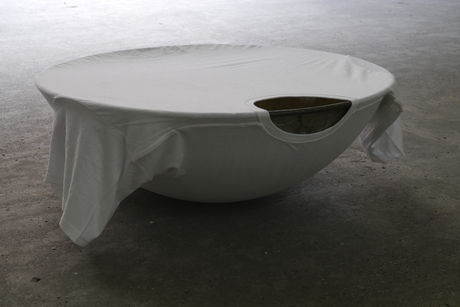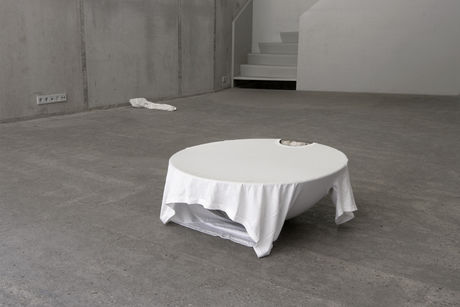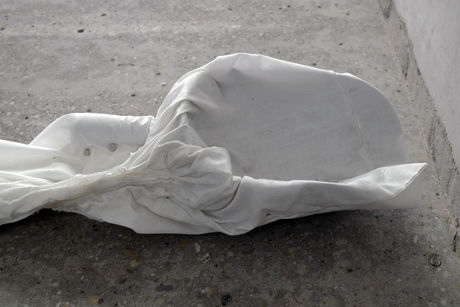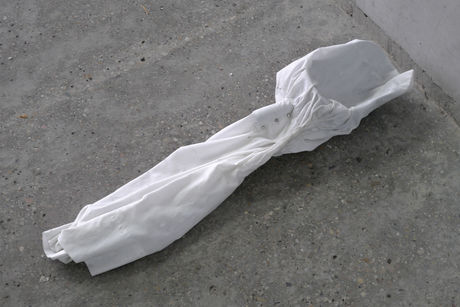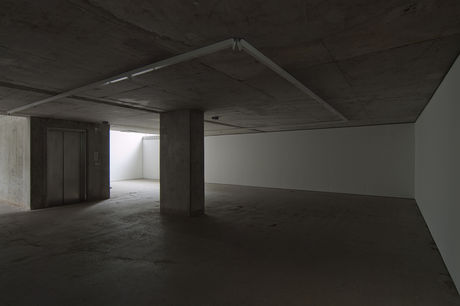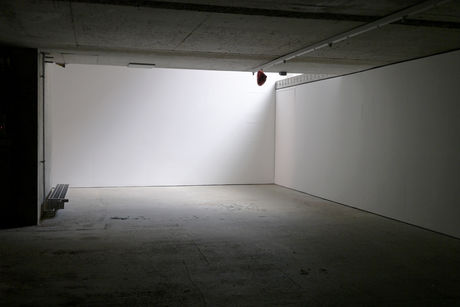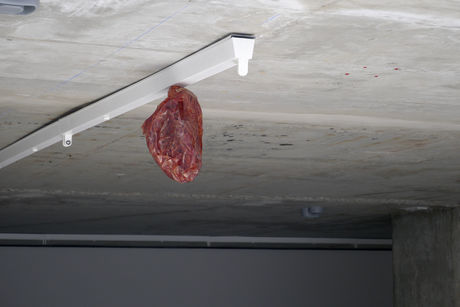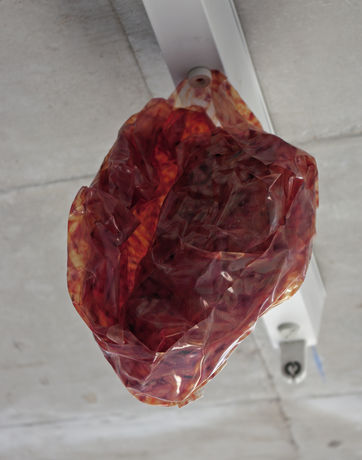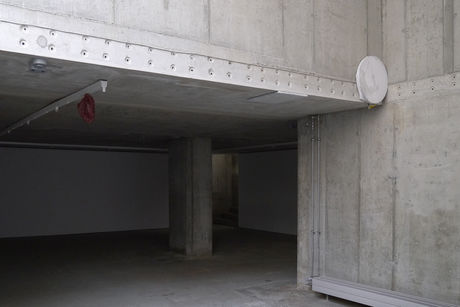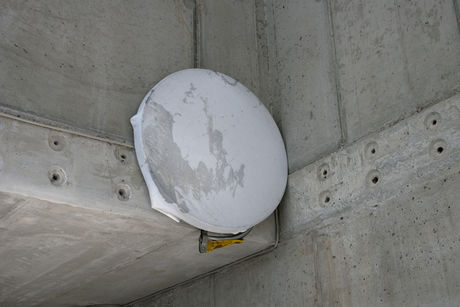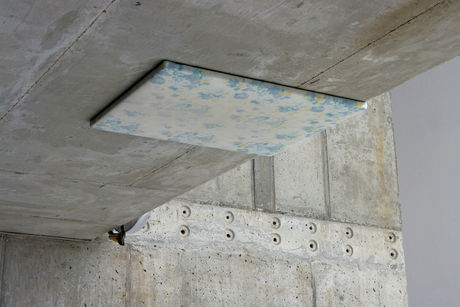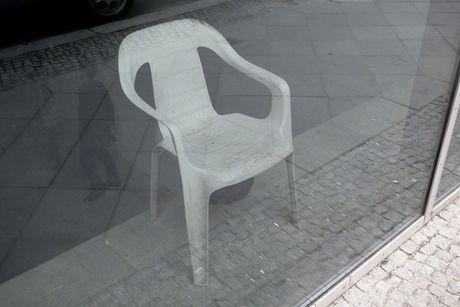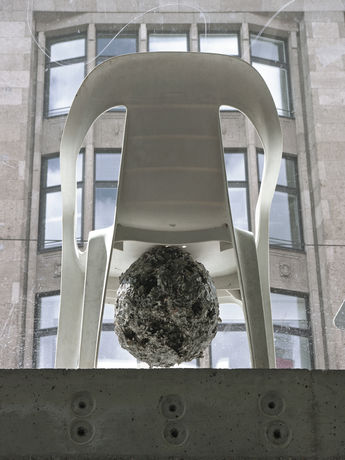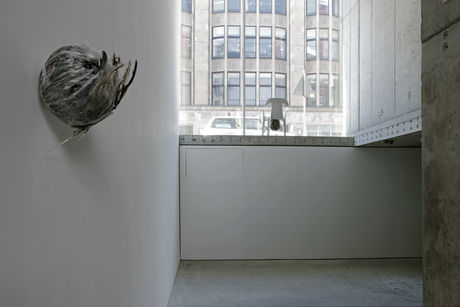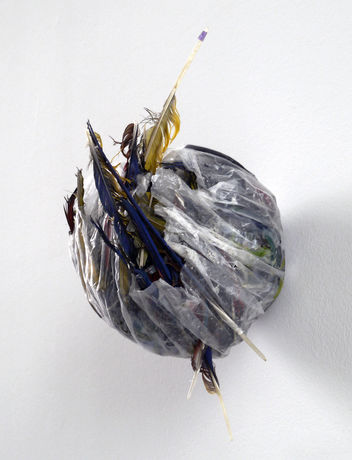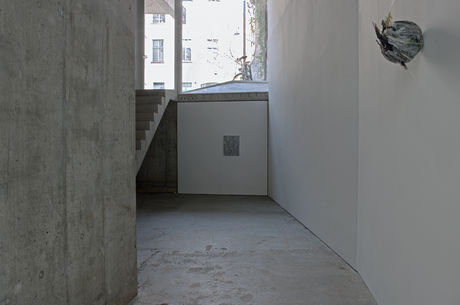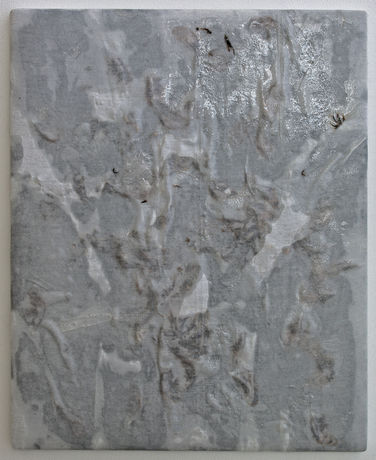Michael E. Smith
Apr 27–Jul 13, 2013
Can a thing be more human than a human being? Michael E. Smith has effaced humans from his art and replaced them with a physiology and psychology of things. He prepares discarded pieces of apparel like socks, T-shirts, and hats, domestic objects like bottles and bowls, parts of technical appliances or animal cadavers, and arranges them as though to lay out a forensics of maltreated lives that persist in their material fragments.
Smith’s sculptures and pictures draw on a frugal repertoire of materials that used to satisfy basic physical needs for food, warmth, or integrity or served in technical routines of everyday life. He takes them out of use and sets them down in the empty space of his exhibitions, where they seek cover in the room or among each other. Dismissed from the social world of which they were once a part, they envelop or support one another or persist in isolation.
They often present the anatomical proportions of torsi or body limbs, or resemble a head in size. PVC foam fills their insides, resins impose rigid shapes on them, their surfaces are gummed up and scratched. They bear the traces of former uses like scabs. Smith’s objects look like physical reconstructions of emotional vulnerability and violation; his exhibitions, like an archaeology of humanity.
For the things in and with which we live are more than mere accessories of the self. Especially when they safeguard our survival, they are our existence. At a time when Western societies overstep the limits of their growth and should urgently switch from expansion to self-preservation, Smith’s oeuvre counters the ecological and economic disaster of our era with a materialism of basic needs.
And yet his art pointedly refuses to align itself with ascetic ideals proclaiming that “less is more.” Modest lifestyles have long started to spread against the will of those who adopt them, and upward economic redistribution is teaching the middle classes the fear of social decline. For many people, “less” means a bare-bones life, and Smith’s objects trace that threshold of pain in lieu of a body politic that has become deaf to its own needs.
KOW presents its second show of works by Michael E. Smith, featuring new sculptures and installations that were largely created on site in our exhibition rooms. A simultaneous solo exhibition of Smith’s work is still on display at Ludwig Forum, Aachen, until June 23; the show’s extensive catalogue will be presented at KOW on June 7. Michael E. Smith, who was born in Detroit in 1977, contributed to the Whitney Biennial in 2012. He lives and works in New Hampshire.
Text and photos: Alexander Koch
Reviews:
ART AGENADA (Apr 26–28, 2013, by Kimberly Bradley)
Downloads:
Smith’s sculptures and pictures draw on a frugal repertoire of materials that used to satisfy basic physical needs for food, warmth, or integrity or served in technical routines of everyday life. He takes them out of use and sets them down in the empty space of his exhibitions, where they seek cover in the room or among each other. Dismissed from the social world of which they were once a part, they envelop or support one another or persist in isolation.
They often present the anatomical proportions of torsi or body limbs, or resemble a head in size. PVC foam fills their insides, resins impose rigid shapes on them, their surfaces are gummed up and scratched. They bear the traces of former uses like scabs. Smith’s objects look like physical reconstructions of emotional vulnerability and violation; his exhibitions, like an archaeology of humanity.
For the things in and with which we live are more than mere accessories of the self. Especially when they safeguard our survival, they are our existence. At a time when Western societies overstep the limits of their growth and should urgently switch from expansion to self-preservation, Smith’s oeuvre counters the ecological and economic disaster of our era with a materialism of basic needs.
And yet his art pointedly refuses to align itself with ascetic ideals proclaiming that “less is more.” Modest lifestyles have long started to spread against the will of those who adopt them, and upward economic redistribution is teaching the middle classes the fear of social decline. For many people, “less” means a bare-bones life, and Smith’s objects trace that threshold of pain in lieu of a body politic that has become deaf to its own needs.
KOW presents its second show of works by Michael E. Smith, featuring new sculptures and installations that were largely created on site in our exhibition rooms. A simultaneous solo exhibition of Smith’s work is still on display at Ludwig Forum, Aachen, until June 23; the show’s extensive catalogue will be presented at KOW on June 7. Michael E. Smith, who was born in Detroit in 1977, contributed to the Whitney Biennial in 2012. He lives and works in New Hampshire.
Text and photos: Alexander Koch
Reviews:
ART AGENADA (Apr 26–28, 2013, by Kimberly Bradley)
Downloads:
